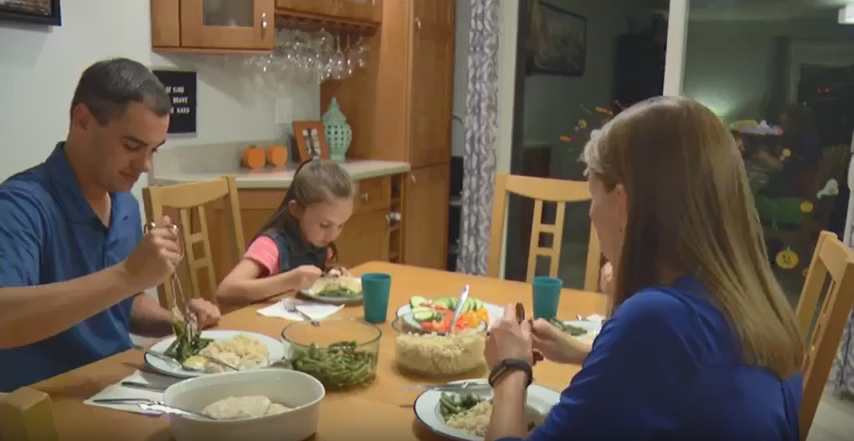CHICAGO, Ill. (Ivanhoe Newswire) — Dinner time is stressful for many families, with parents coming home from work, kids arriving from school, and everyone hungry and ready to eat. New research suggests that a positive attitude during mealtime could influence kids’ food choices, having an impact on their health down the road.
For Lisa and Chris Lucht, the kitchen table is the place where their family refuels and reconnects.
Lisa told Ivanhoe, “It’s important to get us all together so that we have time to talk. The kids know we are focusing on them. They have our full attention. We have their full attention.”
“I like talking about different things and I like eating the vegetables at dinner,” said the Luchts’ daughter.
But a smooth transition from day to dinnertime isn’t always easy.
“Coming home from work, and getting us all to the table, it’s busy,” detailed Lisa.
New research suggests that if parents can create a positive environment at mealtime, children reap the health benefits.
Jaclyn Saltzman, MPH, of the University of Illinois Family Resiliency Center, said, “These findings are saying that emotions matter. Mealtimes matter.”
Saltzman and her colleagues studied the habits of 75 families with three-year-olds. For 23 months they videotaped mealtime visits and used surveys to assess positive and negative emotions and interactions.
“Families that had a more positive mealtime emotional climate also had children who ate about one more serving of healthy food,” said Saltzman.
Saltzman said parents can create a positive environment by involving kids in mealtime setup or preparation. Set a dinnertime routine; eat at the same time and in the same place. Organize a meal plan ahead of time, cutting up vegetables earlier in the afternoon or on weekends. Finally, eliminate all distractions.
“Their kids eat more healthy foods, the kids have healthier weight statuses,” explained Saltzman.
For parents, it’s food for thought.
That extra serving of healthy food meant that kids were eating more lean or soy protein, fruits, and vegetables over an extended period of time. Saltzman and her colleagues at the University of Illinois Family Resiliency Center have additional mealtime tips for families on their website.
Contributors to this news report include: Cyndy McGrath, Supervising and Field Producer; Milvionne Chery, Assistant Producer; Roque Correa, Editor and Videographer.
Produced by Child Trends News Service in partnership with Ivanhoe Broadcast News and funded by a grant from the National Science Foundation.

